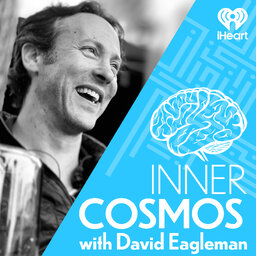Ep13 "Will you perceive the event that kills you?"
How far in the past do you live? Why are live television shows not actually live? What does any of this have to do with nuclear bombs, car accidents, plane crashes, volcanos, or the last episode of the Sopranos? Join Eagleman in a mind-bending dive into the neuroscience of time and what it could mean for your last moment.
 Inner Cosmos with David Eagleman
Inner Cosmos with David Eagleman


